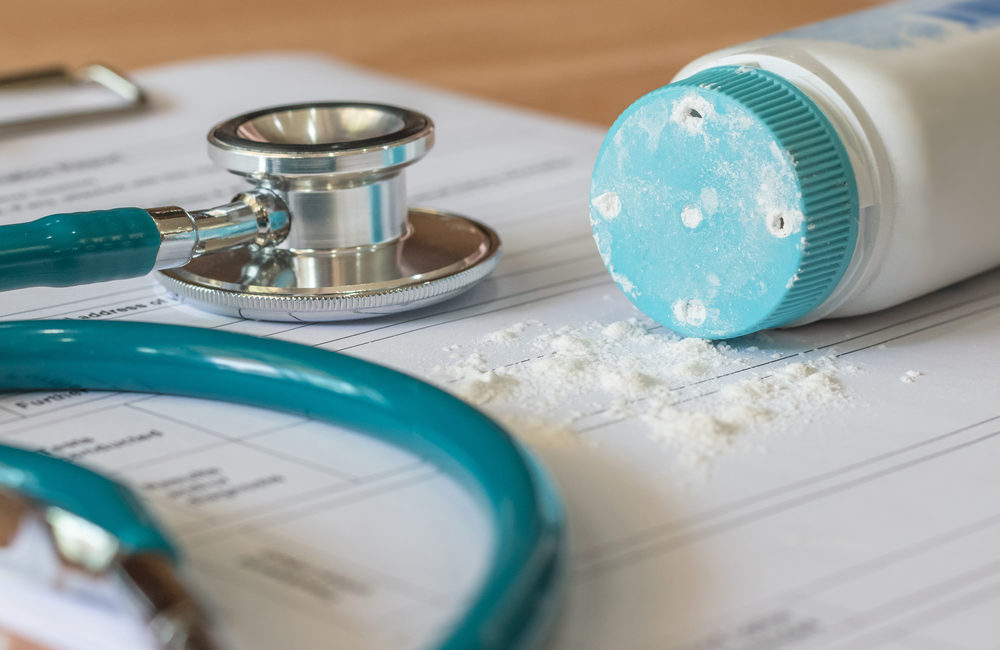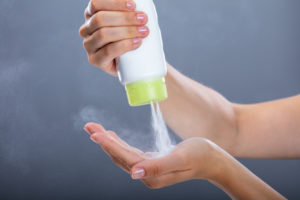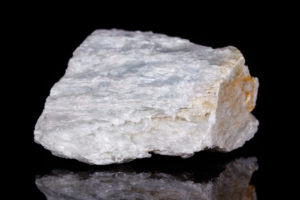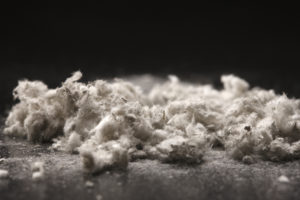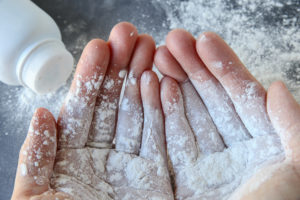Besieged by talcum powder lawsuits, Johnson & Johnson (J&J) has announced that they will discontinue all talcum-based baby powder products in the United States and Canada. This news is certainly a shift for the consumer product, drug and medical device giant. For many years, J&J has defended their talcum-based baby powder from claims that long-term use could lead to ovarian cancer or mesothelioma.
While refusing to concede that their products may have caused injury to thousands of people, J&J has instead decided to remove talcum-based baby powder from the U.S. and Canada while still selling these products in many other countries. In their announcement, J&J says that their decision to discontinue is,
“In large part to changes in consumer habits and fueled by misinformation around the safety of the product and a constant barrage of litigation advertising.”
J&J will continue to sell their cornstarch-based baby powder products in the U.S. and Canada.
Information about Talcum Powder Lawsuits
Talcum powder lawsuits claim that J&J knew that talcum powder products were contaminated by asbestos but failed to warn consumers of the risk of exposure. As a result, thousands of people used the talcum powder products and developed ovarian cancer and mesothelioma.
There are numerous lawsuits pending against J&J and other manufacturers of talcum powder products. Lawsuits against J&J are the most prolific, with more than 19,000 lawsuits on record. These lawsuits represent thousands of women who have used talcum powder products for feminine genital hygiene and then developed ovarian cancer or mesothelioma.
Does Talc Cause Cancer?
The crux of talcum powder lawsuits is causation. Did J&J talcum-based baby powder cause ovarian cancer? Scientists do believe there is evidence to support this claim. The clinical theory of talc carcinogenesis, or the initiation of cancer formation, is one of them. The theory of talc carcinogenesis holds that a foreign inflammatory reaction to talc and/or asbestos fibers induce the release of cytokines and prostaglandins, which further causes a mutagenic effect. This promotes carcinogenesis.
When talcum powder is applied to the genitals or hygiene products (sanitary napkins, tampons or diaphragms), the particles may travel through the vagina, uterus and fallopian tubes. From there, the particles may become lodged in the soft tissue of the ovary, which causes an inflammatory response.
Though J&J have publicly denied that their products are potentially dangerous, several studies and reports have revealed evidence to the contrary.
Research Suggests Link Between Talc and Cancer
As far back as 1971, researchers found a link between talc and ovarian cancer when they found talc fibers embedded in ovarian tumors.
Since then, the link has been confirmed in a variety of sources. Examples include:
- In 1982, another study linked genital use of talc and cases of ovarian cancer.
- Additional studies in the 1990’s supported that link with similar findings.
- Another study in 2004 found that women who used talcum powder in the genital area had twice the risk of developing epithelial ovarian cancer than women who had not.
- In 2016, a meta-analysis reported that women who use talcum powder are at a 33 percent greater risk of developing ovarian cancer.
- A study published in the Journal of Reproductive Sciences in 2019 offered the most powerful evidence yet of a link between talcum powder and ovarian cancer. In this study, researchers found that exposing cancer cells to talc caused “inflammation and rapid cell proliferation, along with a decrease in the death of cancerous cells and a rapid loss of healthy cells.”
In addition to these compelling studies, in 2018, Reuters news agency reported that J&J had known for decades that their talcum powder contained asbestos, but they did not publicly disclose it. Several times between 1971 and 2003, tests showed trace amounts of asbestos in J&J talcum-based baby powder. Still, J&J has defended their product as safe and asbestos-free.
What is Talcum Powder?
Talcum powder is a product made from talc, a mineral comprised of oxygen, silicon and magnesium. Talc is a naturally occurring mineral that is mined from deep underground. Talc deposits are mined and ground to make talcum powder. Once talc becomes powder, it is absorbent and reduces friction. This is why manufacturers market it as a way of protecting skin, keeping it dry and preventing rashes.
Unfortunately, mining pure talc is difficult. Asbestos, which is also naturally-occurring, often weaves through talc deposits like veins. That means that many talc deposits harvested for consumer use will also contain asbestos. In 1976, the Cosmetic, Toiletry, and Fragrances Association (CTFA), issued guidelines requiring all cosmetic products using talc to be free from asbestos.
As we know, studies show that several manufacturers, including J&J, have marketed consumer products as safe despite tests showing that they contained asbestos.
What is Asbestos?
Asbestos is another naturally-occurring mineral that develops as bundles of fibers. These bundles of fibers occur naturally in soil and are present in many types of rock or mineral deposits. Asbestos fibers are incredibly strong and heat-resistant, and they do not conduct electricity. This is why the fibers became so popular during the industrial revolution as a fire-resistant building material and insulator.
The most common type of asbestos is chrysotile, or white asbestos. These fibers are common in manufacturing insulation, brake pads, shingles, ceiling and floor tiles, textiles and other industrial products.
As early as the 1930’s, doctors discovered that asbestos caused breathing problems and scarring of the lungs. During the second half of the 20th century, lawmakers began to establish asbestos exposure limits. This was due to a large number of workers exposed to asbestos developing lung cancer and mesothelioma. Due to increasing oversight and safety concerns, asbestos has since been banned for most uses. It is still a safety issue in many consumer products and buildings, however.
Have Questions about Talcum Powder Lawsuits?
Do you have questions about talcum powder lawsuits? Are you concerned that you have been exposed to asbestos through baby powder products? If so, contact Drug and Device Watch to learn more about your legal rights and options.
At Drug and Device Watch, our attorneys are currently handling cases involving talcum powder. If you or someone you love has used J&J talcum-based baby powder for feminine hygiene and has since been diagnosed with ovarian cancer or mesothelioma, contact us right away. We may be able to represent you in a talcum powder lawsuit.
For a free case evaluation and to find out if you have an actionable claim, contact Drug and Device Watch by calling 1-800-681-2136. You can also request a free case evaluation through our online contact form.
Sources:
- https://www.wsj.com/articles/johnson-johnson-to-stop-selling-talcum-baby-powder-in-u-s-canada-11589922588?mod=djemalertNEWS
- https://www.cnbc.com/2020/05/19/johnson-johnson-discontinues-talc-based-baby-powder-in-us-and-canada.html
- https://www.cancer.org/cancer/cancer-causes/talcum-powder-and-cancer.html
- https://www.cancer.org/cancer/cancer-causes/asbestos.html
